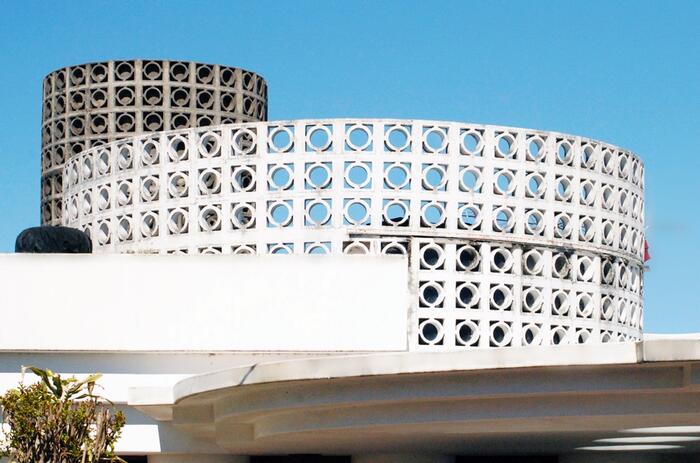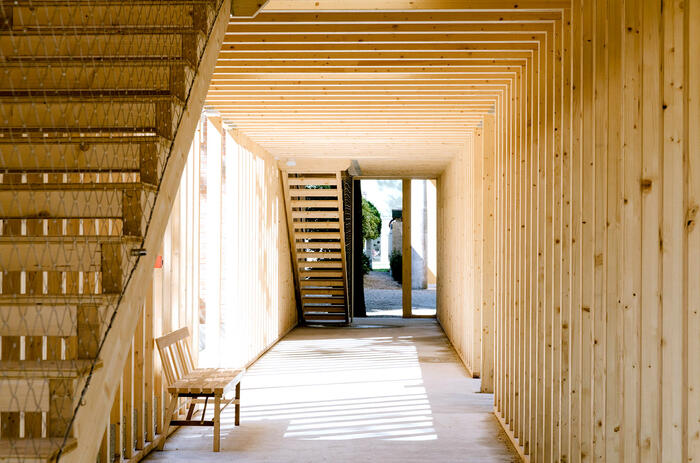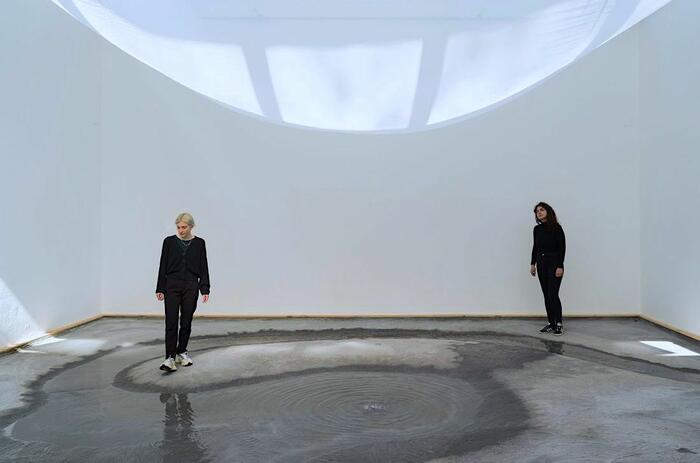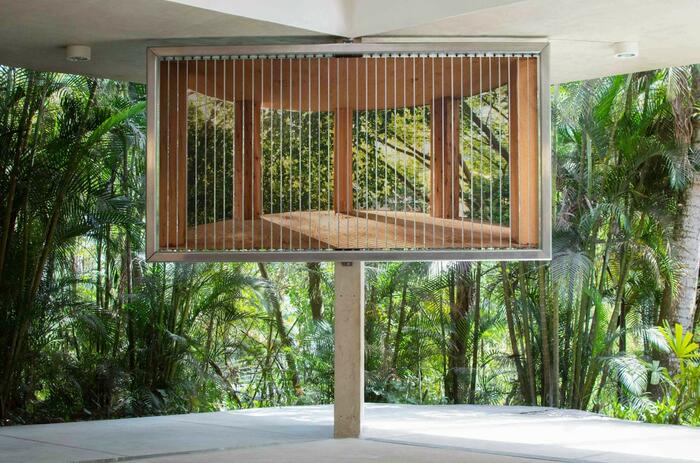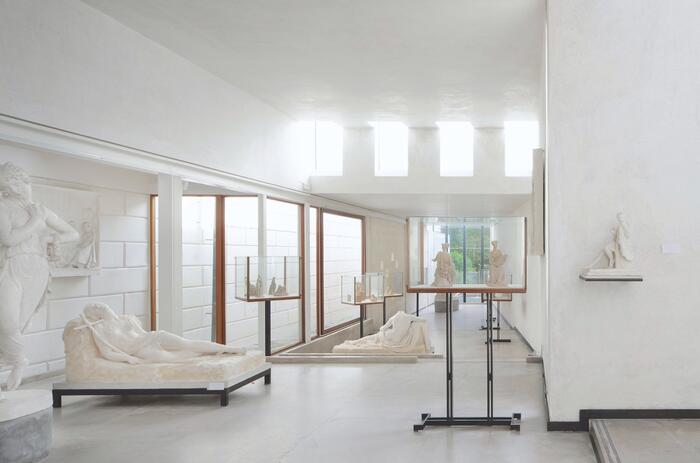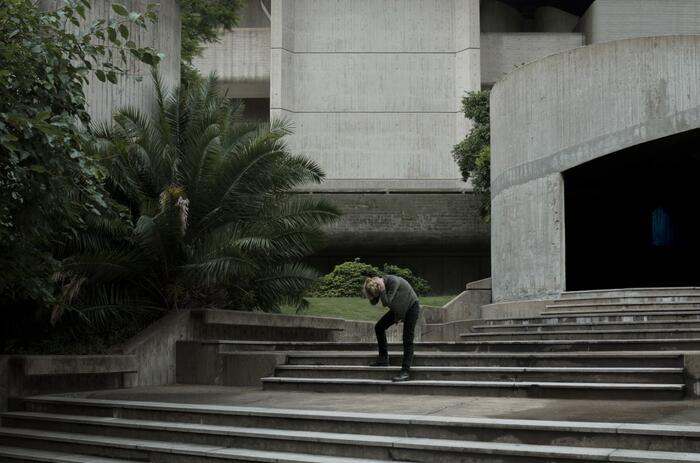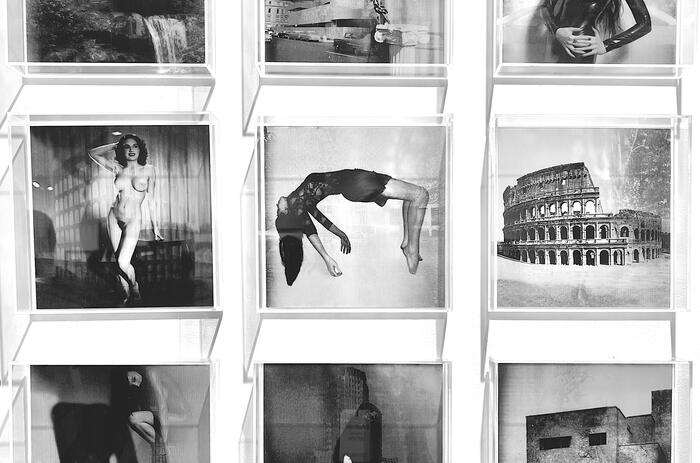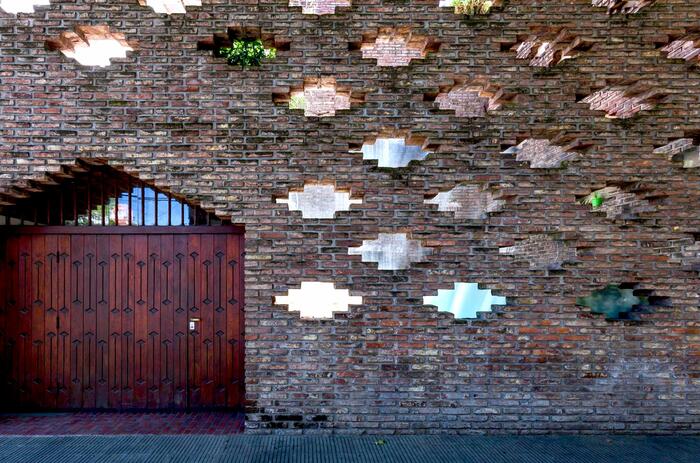CARLO SCARPA, VENICE, THE ENIGMA IN THE POETIC
"Venice, nenuphar city" ... says the poet Paul Morand in his magnificent book Venises, plural. Venice, in addition to being host of the most famous biennials, today on its seventeenth edition in architecture, is in its plurality the land of one of the great masters of 20th century architecture, Carlo Scarpa.
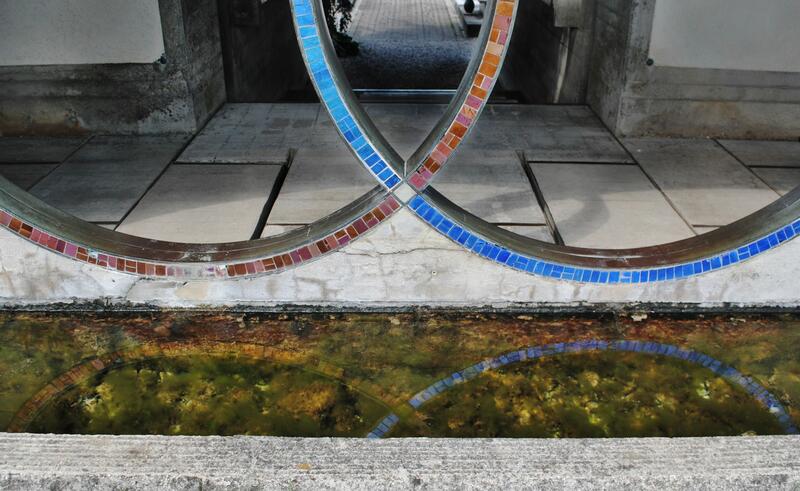
Scarpa was born on June 2, 1906, very close to the Campo de Santa Margarita in the Corte dell Asio. He spent his life and built his oeuvre in Veneto: Vicenza, Verona, Padua, Treviso, Venice itself. Only one project he builds outside, the Zentner house in Zürich.
As a child he played among the colonnades of the Chiericati Palace (1550) in Vicenza, a masterpiece of another great Veneto architect, the Mannerist Andrea Palladio. From Vicenza, where his family lived, at thirteen Scarpa and his family moved to Venice, after his mother’s departure.
Scarpa worked as an architect, a draftsman and a glazier. Master of the famous Cappelin and Venini crystals, he designed exquisite pieces, inspired by the transparencies of the Veronese paintings, one of his favorite artists of the Venetian School.
In 1948, his relationship with the Biennale began, where he designed a superb montage for the works of Paul Klee. The Swiss artist is a great reference for Scarpa in his way of thinking about drawing. "Art art does not reproduce the visible; rather it makes visible," says Klee, the insisting on the vision of the thing itself, rather than on the representation of an idea external to the thing.
Scarpa's relationship with the Biennale continues, and in 1952 he designed the magnificent sculpture patio and the Giardini ticket office in the Italian pavilion.
His last built project (1969/77) is the Brion Tomb monumental complex —a Capolavoro— in San Vito de Altivole, in Treviso, at the foot of Mount Asolo, very close to the Villa Barbaro-Maser (1560/70) of the admired Palladio, with frescoes by the Veronese. Scarpa produces a huge sheet of drawings that are preserved almost in their entirety in his archives. These drawings show, in a privileged way, approximations to his architecture: "I want to see things, it is the only thing I trust. I put them here on the paper, in front of me, to be able to see them. I want to see and therefore I draw. I can only see an image when I have drawn it."
In a conference that he gives at the Academy of Fine Arts in Vienna (1976), Scarpa asks: "Can architecture be poetry?" and the most forceful answer is enunciated in the Brion Tomb monumental complex, an oeuvre from which a poetic sense emanates.
The complex is organized around the old cemetery, occupying three-quarters of its surface, surrounding it.
The Arco solium, a concrete arch covered internally with colored glass, green, blue and gold, covers the graves of the Brion couple from which a pair of steps descends, and composes as a pivoting element between the two wings of the cemetery. One dedicated to the contemplation of the landscape, with the nenuphar pond and its edicular space in the middle, and on the other side the funerary chapel rotated at 45º to officiate religious ceremonies, also surrounded by water.
The complex is externally defined by a perimeter wall at a half level of reinforced concrete and buttresses, which avoids indiscreet views from the exterior by being above ground level by +1.60 meters.
Scarpa maintained a rigorous dimensional control of the project based on a 5.5 / 11 centimeter module, measure of the wooden formwork used in the concreting of the building. The story tells that the architect toured it, even at night, to control its fair proportion.
Water, concrete, textured plaster are almost the dominant material elements, along with translucent coloured glass, typical of the Venetian tradition, of which Scarpa was a master.
Scarpa had an eclectic library. Books dedicated to architecture, those of one of his teachers proliferated: Frank Lloyd Wright - whom he met in Venice in 1951 - and also philosophy such as the work of Gastón Bachelard, Water and Dreams, or Meditations on Quixote by José Ortega y Gasset.
Water as a project material is almost inherent to a Venetian like Scarpa, hence the illustrious nature of Morand's metaphor: "Venice, nenuphar city" ...
Reflected water is one of the complex's design strategies. Bachelard writes and Scarpa paraphrases it with his work: "The reverie sometimes begins in front of clean water, full of immense reflections, which murmurs crystalline music... It ends in the bosom of a sad and gloomy water that transmits strange and funereal murmurs. The reverie near water, when it finds its dead again, it too dies, like a submerged universe."
-
Aguas reflejadas. Foto: Ana Arlia, Ilaria Pezzin, Alejandro Vaca Bononato, archivo AVB.
-
Aguas reflejadas. Foto: Ana Arlia, Ilaria Pezzin, Alejandro Vaca Bononato, archivo AVB.
-
Edículo de contemplación en el jardín de nenúfares. Foto: Ana Arlia, Ilaria Pezzin, Alejandro Vaca Bononato, archivo AVB.
-
Estanque de nenúfares. Foto: Ana Arlia, Ilaria Pezzin, Alejandro Vaca Bononato, archivo AVB.
An oeuvre full of symbols, it shows the enormous cultural heritage of the architect.
References to Byzantine architecture and the Christs of the Romanesque temples; The apse of the Christ of the Last Judgment of Sant Climent de Taüll (around 1123), or the Katsura Imperial Villa in Kyoto-Japan (1615/22), or Piet Mondrian and his neoplastic arch-paintings, or the Chand Baori stepwell in Rajastahn, India, (800-900 BC), or Monet’s Japanese Footbridge of his nenuphar garden at Giverny (1899), remembered in the Arco solium.
-
Cristo del Juicio Final de Sant Climent de Taül. Foto: Ana Arlia, Ilaria Pezzin, Alejandro Vaca Bononato, archivo AVB.
-
Composición en azul-gris y rosa, Piet Mondrian. Foto: Ana Arlia, Ilaria Pezzin, Alejandro Vaca Bononato, archivo AVB.
-
Chand Baori. Foto: Ana Arlia, Ilaria Pezzin, Alejandro Vaca Bononato, archivo AVB.
-
Puente Japonés, Claude Monet. Foto: Ana Arlia, Ilaria Pezzin, Alejandro Vaca Bononato, archivo AVB.
In the complex, symbolic framework that the architect masterfully proposes, the mandorla, the almond, has a privileged place; a symbol of Christian origin and present in the Venetic culture and in the project.
At the Propylaea area that officiates as the entrance, like in ancient temples, a mandorla, the intersection space between the two concrete circles covered with carmine and blue venecitas, welcomes us.
The pietri sonante, stone layering of the floor, with well-marked joints to allow its articulation and movement; indicate to us, in a Heideggerean way, the Being there, the way of a knowing of a situated Being. Not an abstract Being but a Dasein, a Being there, subtly signaled by the listening of our own steps and the soft murmur of the still waters when entering the project...
Scarpa offers a tour in the manner of an architectural promenade, from the Alpha -the beginning- the mandorla, to the Omega -the end- present in the chapel ...
-
Propileo visto desde el jardín. Foto: Ana Arlia, Ilaria Pezzin, Alejandro Vaca Bononato, archivo AVB.
-
Pietri Sonante en el propileo. Foto: Ana Arlia, Ilaria Pezzin, Alejandro Vaca Bononato, archivo AVB.
-
Mandorla – inicio del propileo. Foto: Ana Arlia, Ilaria Pezzin, Alejandro Vaca Bononato, archivo AVB.
-
Mandorla desde afuera. Foto: Ana Arlia, Ilaria Pezzin, Alejandro Vaca Bononato, archivo AVB.
-
Omega – fin. Foto: Ana Arlia, Ilaria Pezzin, Alejandro Vaca Bononato, archivo AVB.
The architect clearly announces it:
"Brion is a passage ..."
We can ask ourselves: a passage to what?
I state a possible answer:
If beauty is a calling, Kalein—Kalon in ancient Greek,
"Brion is a passage... "
An outburst to beauty.

